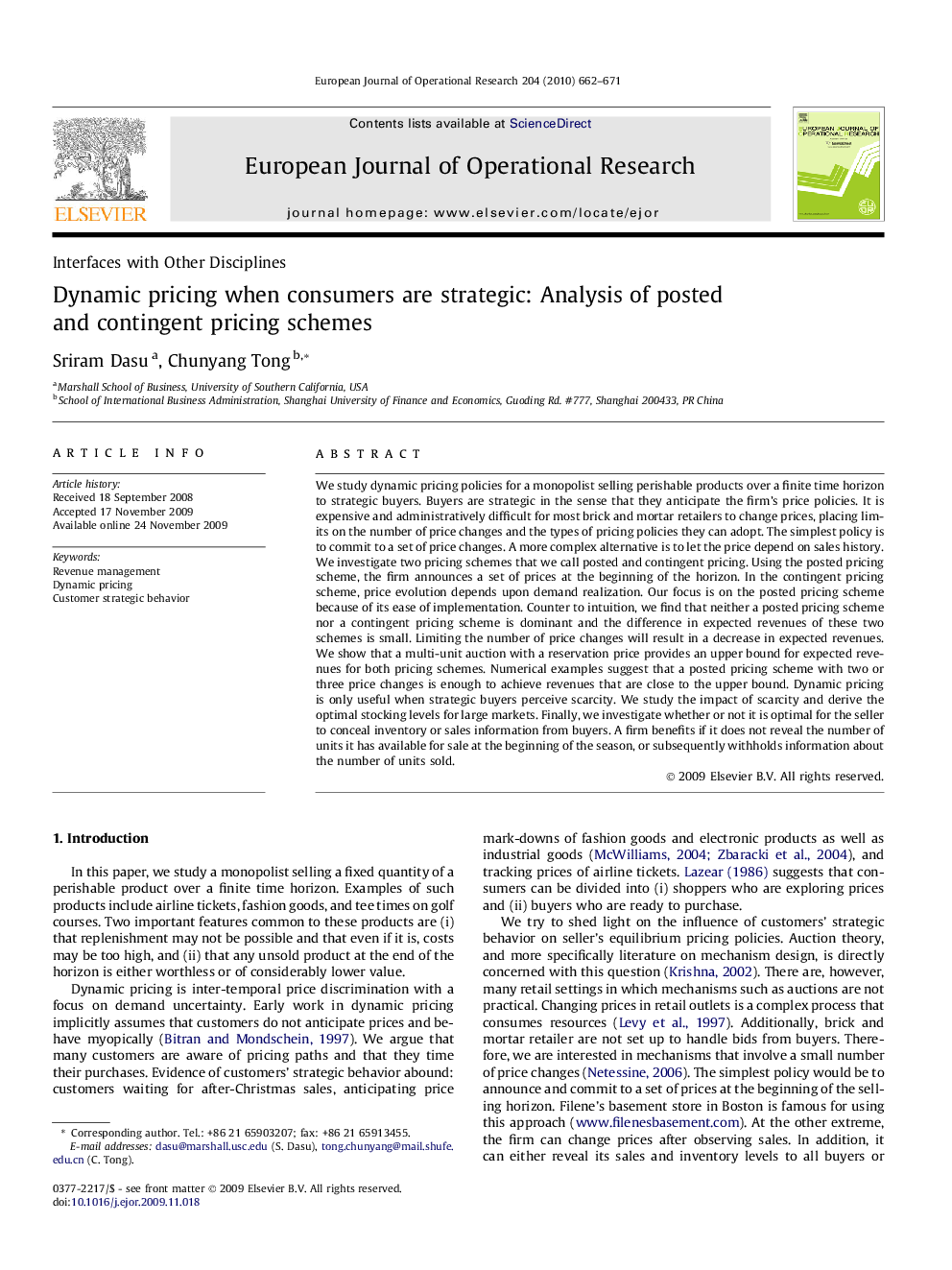| کد مقاله | کد نشریه | سال انتشار | مقاله انگلیسی | نسخه تمام متن |
|---|---|---|---|---|
| 481976 | 1446123 | 2010 | 10 صفحه PDF | دانلود رایگان |

We study dynamic pricing policies for a monopolist selling perishable products over a finite time horizon to strategic buyers. Buyers are strategic in the sense that they anticipate the firm’s price policies. It is expensive and administratively difficult for most brick and mortar retailers to change prices, placing limits on the number of price changes and the types of pricing policies they can adopt. The simplest policy is to commit to a set of price changes. A more complex alternative is to let the price depend on sales history. We investigate two pricing schemes that we call posted and contingent pricing. Using the posted pricing scheme, the firm announces a set of prices at the beginning of the horizon. In the contingent pricing scheme, price evolution depends upon demand realization. Our focus is on the posted pricing scheme because of its ease of implementation. Counter to intuition, we find that neither a posted pricing scheme nor a contingent pricing scheme is dominant and the difference in expected revenues of these two schemes is small. Limiting the number of price changes will result in a decrease in expected revenues. We show that a multi-unit auction with a reservation price provides an upper bound for expected revenues for both pricing schemes. Numerical examples suggest that a posted pricing scheme with two or three price changes is enough to achieve revenues that are close to the upper bound. Dynamic pricing is only useful when strategic buyers perceive scarcity. We study the impact of scarcity and derive the optimal stocking levels for large markets. Finally, we investigate whether or not it is optimal for the seller to conceal inventory or sales information from buyers. A firm benefits if it does not reveal the number of units it has available for sale at the beginning of the season, or subsequently withholds information about the number of units sold.
Journal: European Journal of Operational Research - Volume 204, Issue 3, 1 August 2010, Pages 662–671